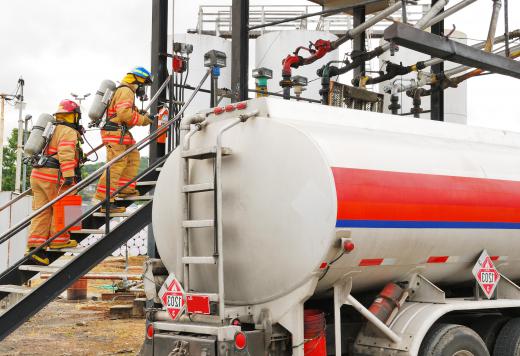A skid unit is a type of portable fire suppression device that can be mounted in the bed of a pickup truck or other similar vehicle. These self-contained devices are designed to slide onto the bed of a vehicle that is normally used for other purposes in order to transform it into a highly mobile fire suppression platform. Skid units can extend the fire fighting capability of a fire department for a lower overall cost than buying a fire engine, but they can also be used to reach areas that larger fire trucks cannot. The size of a skid unit is limited only by the platform it is designed to be installed on, and they can hold anywhere from 50 to 1,500 gallons (190 to 5,600 liters) of water. It is also possible for a skid unit to dispense chemical fire suppression agents instead of water.
Skid units can vary in complexity, though many consist of at least a water source, pump, and hose. Other units are designed to use foam and other chemical fire suppression methods. A skid unit may be designed specifically to dispense class a or b foam, in which case it will have containers for foam concentrates instead of or in addition to water. Other skid units use a twin agent fire extinguishing system (TAFES). In certain hazardous applications, this use of both dry chemicals and foam can be necessary to contain a fire.

The various components that make up a skid unit are typically mounted on a platform that can slide into the bed of a standard sized pickup truck. Larger and smaller units that are designed to be used with other commercially available vehicles also exist. Very large skid units can be installed on flatbed trucks and typically come with very large water reservoirs, and small units can be placed on the beds of all terrain vehicles (ATVs) for increased mobility.
Forestry services and other organizations often make use of small ATV-mounted units. These vehicles can handle rough terrain much better than pickup trucks and can often reach areas that are inaccessible to full sized fire engines. Some skid units that are designed for ATVs also include various life saving equipment that is typically carried by ambulances. These units sometimes also have space to transport an injured person out of a difficult to reach area and back to medical help.
